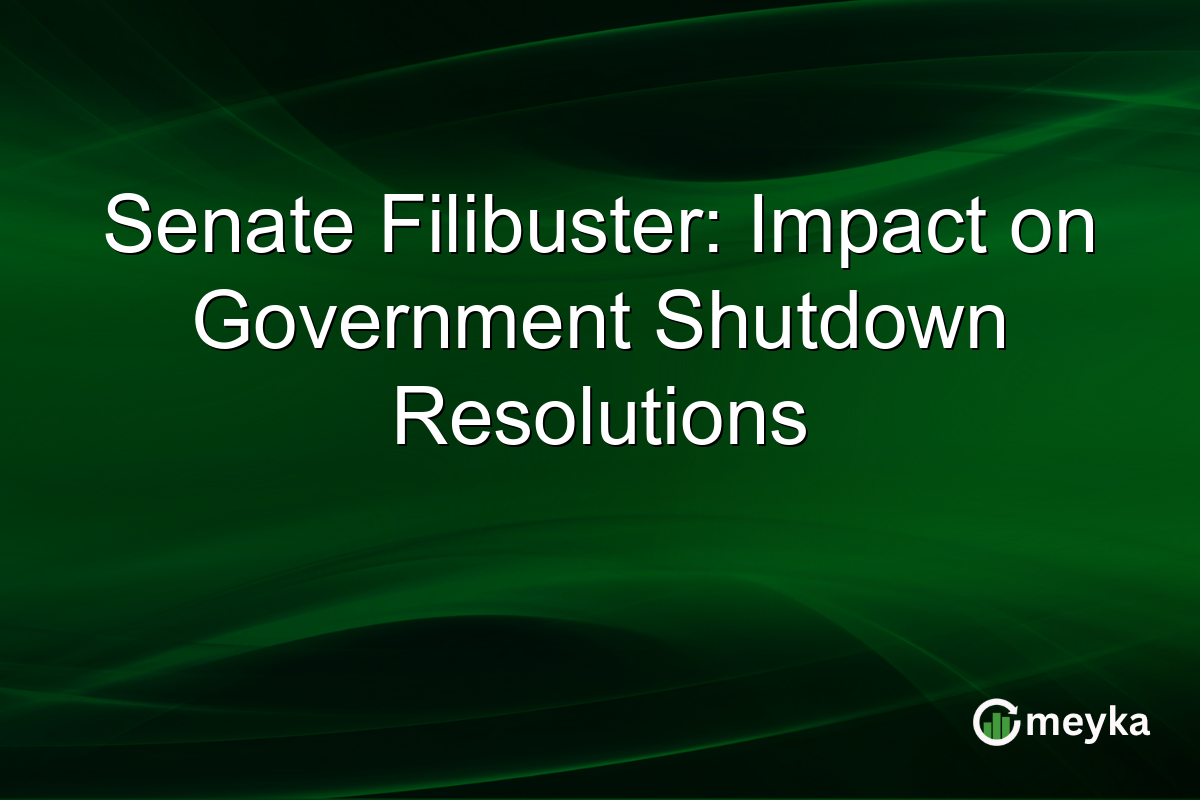Senate Filibuster: Impact on Government Shutdown Resolutions
The Senate filibuster remains a pivotal mechanism in U.S. legislative procedures. Recently, its role has become even more crucial as the nation faces the longest government shutdown in history. Senate Majority Leader John Thune is advocating for a bipartisan package to navigate the impasse. As the filibuster’s future hangs in the balance, its impact on government shutdown resolutions is under intense scrutiny.
Understanding the Filibuster’s Role
The filibuster is a Senate tactic that allows minority parties to prolong debate, thereby delaying or preventing votes on legislation. Traditionally, it requires a 60-vote supermajority to close debate on most issues, including budgetary appropriations that could end a shutdown. This procedural hurdle has become a focal point in current Senate negotiations. Its defenders argue it ensures cross-party collaboration, while opponents claim it stifles legislative progress.
Current Government Shutdown Context
The ongoing government shutdown, now the longest in U.S. history, has left federal employees and aid programs in limbo. With mounting pressure on the Senate to resolve the deadlock, the filibuster’s impact is evident. The inability to reach a consensus without a supermajority has intensified discussions about its relevance. Some leaders believe eliminating the filibuster could expedite a resolution, albeit at the cost of increased partisanship.
Social media and news outlets are buzzing with discussions on this topic, with relevant insights available on platforms like X (formerly Twitter).
Senate Negotiations and Bipartisan Efforts
Senate Majority Leader John Thune’s push for a bipartisan package highlights efforts to find common ground amid division. This package aims to address fundamental budgetary constraints while ensuring essential services remain funded. However, the filibuster’s continued presence means any package needs substantial bipartisan support. While this encourages negotiation, it also risks prolonged deadlock if parties fail to compromise, illustrating the delicate balance required in legislative strategy.
Potential Changes and Their Consequences
Calls to eliminate or reform the filibuster reflect a growing frustration with legislative gridlock. If removed, the Senate could theoretically pass resolutions with a simple majority. This might quickly end the government shutdown but could also lead to future volatile swings in policy as party control shifts. The strategy behind such a decision involves weighing immediate benefits against long-term institutional stability.
Final Thoughts
The debate over the Senate filibuster’s future is more than procedural nuance; it shapes how effectively the government can function amid crises like the current shutdown. While some view it as a necessary guardrail for bipartisan cooperation, others see it as an impediment to necessary action. As the Senate grapples with these challenges, the filibuster’s influence on policy and governance remains a pivotal concern. The outcome of this debate will not only affect current shutdown resolutions but also set a precedent for how future legislative challenges are managed.
FAQs
The filibuster requires a 60-vote supermajority to end debate on most issues, such as budget approvals critical for resolving government shutdowns. This can delay or obstruct resolutions if sufficient bipartisan support isn’t achieved.
By necessitating a supermajority, the filibuster compels parties to negotiate and find compromise solutions. However, this can lead to gridlock when consensus is unattainable, impacting legislative progress.
Proponents argue it ensures minority party input and prevents rash decisions, fostering bipartisan solutions. Opponents criticize it for causing legislative paralysis, suggesting its removal could streamline decision-making processes.
Disclaimer:
The content shared by Meyka AI PTY LTD is solely for research and informational purposes. Meyka is not a financial advisory service, and the information provided should not be considered investment or trading advice.






